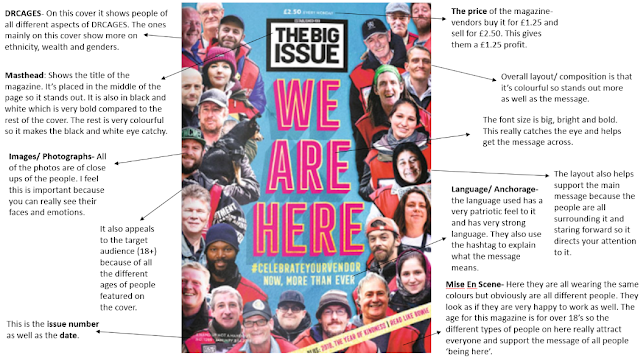BARB - The Broadcasters' Audience Research Board is the organisation that compiles audience measurement and television ratings in the United Kingdom.
WEBCASTING LICENSE - If you operate a service that streams sound recordings online, then you will need a Webcasting Licence; Allows you to webcast as a service.
TECHNOLOGICAL CONVERGENCE - Technological convergence is the tendency that as technology changes, different technological system sometimes evolve toward performing similar tasks.
WEB 3.O OR SEMANTIC WEB - a proposed development of the World Wide Web in which data in web pages is structured and tagged in such a way that it can be read directly by computers.
INTERNET OF THINGS - The Internet of things is the network of physical devices, vehicles, home appliances and other items embedded with electronics, software, sensors, actuators, and network connectivity which enables these objects to connect and exchange data.
BINGE-VIEWING - watch multiple episodes of (a television programme) in rapid succession, typically by means of DVDs or digital streaming.
DAB - Digital audio broadcasting is a digital radio standard for broadcasting digital audio radio services, used in countries across Europe, the Middle East and Asia Pacific.
TRADITIONAL MEDIA - television, radio, newspapers, magazines, newsletters, tax press and other print publications.
GOOGLE ANALYTICS - a freemium web analytics service offered by Google that tracks and reports website traffic.
RAJAR - stands for Radio Joint Audience Research and is the official body in charge of measuring radio audiences in the UK. It is jointly owned by the BBC and the Radiocentre on behalf of the commercial sector.
NRS - The National Readership Survey is a joint venture company in the UK between the Institute of Practitioners in Advertising, the Newspaper Publishers Association and the Periodical Publishers Association.
MIDAS - Midas Media is a digital marketing agency that focuses on content marketing, search engine optimization, social media marketing
CULTURAL IMPERIALISM - Cultural imperialism comprises the cultural aspects of imperialism. Imperialism here refers to the creation and maintenance of unequal relationships between civilizations, favoring the more powerful civilization.
DEMOCRATISATION OF THE MASS MEDIA - the introduction of a democratic system or democratic principles in the mass media.
EFFECTS OF PIRACY – the effects of the unauthorized use or reproduction of another's work.
HORIZONTAL INTEGRATION - Horizontal integration is the process of a company increasing production of goods or services at the same part of the supply chain. A company may do this via internal expansion, acquisition or merger.
VERTICAL INTEGRATION - the combination in one firm of two or more stages of production normally operated by separate firms.
DIVERSIFICATION - the action of making or becoming more diverse or varied.
ALTERNATIVE MEDIA - Alternative media are media that differ from established or dominant types of media in terms of their content, production, or distribution.
CONGLOMERATE - a thing consisting of a number of different and distinct parts or items that are grouped together
GRA - Games Rating Authority.
PEGI - Pan European Game Information is a European video game content rating system established to help European consumers make informed decisions when buying video games or apps through the use of age recommendations and content descriptors.
MEDIAWATCH UK - formerly known as the National Viewers' and Listeners' Association (National VALA or NVLA), is a pressure group in the United Kingdom, which campaigns against the publication and broadcast of media content that it views as harmful and offensive, such as violence, profanity, sex, homosexuality and blasphemy.
IPSO - Independent Press Standards Organisation.
WATERSHED - an event or period marking a turning point in a situation.
OFCOM - The Office of Communications, commonly known as Ofcom, is the UK government-approved regulatory and competition authority for the broadcasting, telecommunications and postal industries of the United Kingdom.
MEDIAWATCH - is a media monitoring organisation
BBC CHARTER - The BBC Charter established the BBC (British Broadcasting Corporation). An accompanying Agreement recognises its editorial independence and sets out its public obligations in detail. Each Charter has run for ten years.
SYNERGY - the interaction or cooperation of two or more organizations, substances, or other agents to produce a combined effect greater than the sum of their separate effects.
PSB - public service broadcasting refers to broadcasting intended for public benefit rather than to serve purely commercial interests
BROADCAST CODE - was a set of ethical standards adopted by the National Association of Broadcasters (NAB) for television.
IWF - The Internet Watch Foundation is a registered charity based in Cambridgeshire, England. It states that its remit is "to minimise the availability of 'potentially criminal' Internet content.














